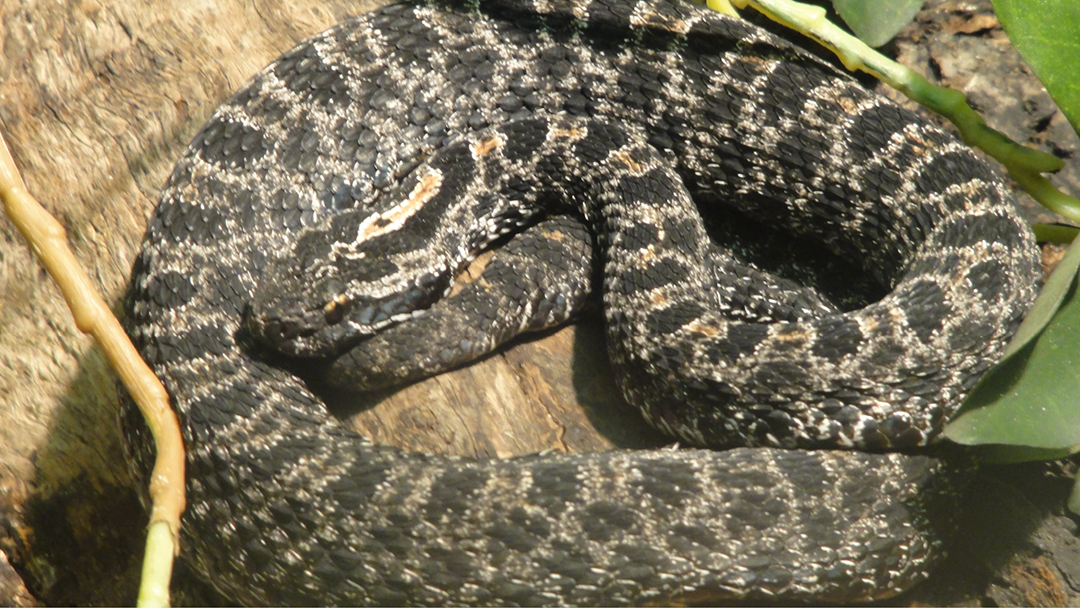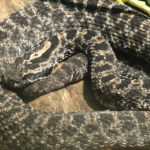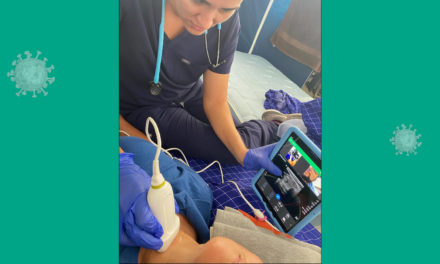Poison Control: The F(ab2)ulous Expanded Indication of Anavip
Photo provided by Dawn Sollee, PharmD, DABAT, editor of the Poison Control column
Due to our warmer climate, the Florida Poison Information Center Network (FPICN) receives calls concerning snakebites year-round. Last year, 668 calls were reported to the FPICN regarding snakebites. Fortunately, most species of snakes in Florida are non-venomous. However, the majority of the venomous bites are from the pit vipers (subfamily: Crotalinae). Snakes in Florida within this subfamily include the eastern diamondback rattlesnake, canebrake/timber rattlesnake and the pigmy rattlesnake (genera Crotalus and Sistrurus), as well as the cottonmouth and copperhead snake (genus Agkistrodon). If a patient were to get bitten by one of these snakes, or any other, it is recommended that they seek immediate medical evaluation.
Once at a healthcare facility, patients should be assessed for any evidence of envenomation, including swelling, coagulopathy and signs of systemic toxicity. If symptoms of moderate to severe envenomation are present, treatment is supportive care and antivenom. The two antivenom products available in the United States for the management of pit viper envenomation are CroFab® and Anavip®. CroFab® is an ovine derived Fab fragment antivenom and has been approved by the Food and Drug Administration (FDA) for the management of North American crotalid envenomations (rattlesnakes, copperheads and cottonmouth/water moccasins). Anavip® is an equine-derived F(ab)2 fragment product and was originally FDA approved only for the treatment of North American rattlesnake envenomations. However, as of April 1, 2021, Anavip®’s approved indication has expanded to include copperheads and cottonmouth/water moccasin envenomation. [1]
The original Anavip® Phase 3 clinical trial enrolled all pit viper envenomations and was developed to determine the difference between Anavip® and CroFab® in relation to the primary endpoint of late coagulopathies. [2] Late coagulopathies have been a common complication observed with CroFab® administration and are even cited in the CroFab® package insert to occur in approximately 50% of patients. [3] The Anavip® trial sought to prove that late onset coagulopathies would not be as common with the F(ab)2 product. In fact, the trial demonstrated that patients who received Anavip® had a significantly lower number of delayed coagulopathies than patients receiving CroFab® (p<0.05). During the original review and approval of Anavip®, the FDA made the decision to exclude copperhead patients since late coagulopathies are more commonly observed in rattlesnake envenomations. The FDA’s focus on rattlesnake data at that time also led to the exclusion of copperhead envenomation as an indication for Anavip®. The original Anavip® clinical trial still included copperhead data, which was recently reviewed in a post-hoc analysis and discussed with the FDA. [4] This post-hoc analysis looked at time to initial control, doses to achieve initial control, and unscheduled doses of antivenom after initial control. A non-inferiority analysis concluded that Anavip® was non-inferior to CroFab® for the treatment of copperhead envenomations. [4] This data, combined with evidence of Anavip® neutralizing venom from cottonmouth and copperhead in mice and human case report information, supported the FDA’s decision to expand Anavip®’s indication. [5,6]
No matter which antivenom your facility chooses to carry, since the approved indications are now the same, the FPICN is readily available at 1-800-222-1222 to assist in the management of snake envenomations. Trained medical staff and toxicologists are on call 24/7/365 and are well equipped to answer any questions regarding these envenomations and antivenoms.
References:
- Anavip [package insert]. Laboratorios Silanes S.A. de C.V. Toluca, Estado de Mexico, Mexico; 2021.
- Bush SP, Ruha A-M, Seifert SA, et al. Comparison of F(Ab’)2 versus Fab antivenom for pit viper envenomation: A prospective, blinded, multicenter, randomized clinical trial. Clin Toxicol (Phila). 2015;53(1):37-45.
- Crofab [Package insert] BTG International Inc. West Conshohocken, PA; 2018.
- Gerardo CJ, Keyler DE, Rapp-Olsson AM, Schwarz J III, Dart RC. Post Hoc Analysis of the RCT Comparing F(ab’)2 to Fab Antivenom: Control of Venom-Induced Tissue Injury in Copperhead Snakebite Patients. Annals of Emergency Medicine 76(4) Supp:S29Dec;26(4):472-87.
- Wilson B, Larsen J, Smelski G, Dudley S, Shirazi FM. Successful Use of Anavip for Treatment of an Agkistrodon Envenomation. Clinical Toxicology 58(11):188.
- Sanchez EE, Galen JA, Perez JC, et al. The efficacy of two antivenoms against the venom of North American Snakes. Toxicon. 2003; 41:357-365.
This article is part of the following sections:












